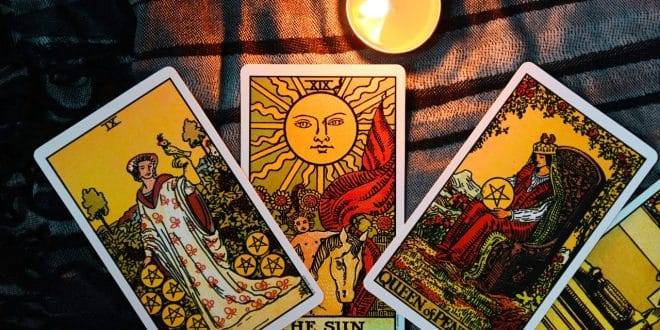Reading tarot cards for yourself can be a powerful way to gain insight, clarity, and guidance in your life. While some people think you need to be a professional reader or psychic to read tarot, the truth is anyone can learn. With a little practice and an open mind, you can use tarot to explore your thoughts, emotions, and potential paths forward.
In this guide, I’ll walk you through five simple steps to start reading your own tarot cards with confidence. Whether you’re a complete beginner or looking to improve your skills, these steps will help you connect with your cards and your intuition.
Step 1: Set Your Intention and Focus on a Question
Before you start your reading, it’s important to set an intention or think about the question you want guidance on. Tarot works best when you approach it with a clear and open mind. Your question can be about any area of life—relationships, career, health, or personal growth—but it’s best to ask open-ended questions rather than “yes” or “no” questions.
Examples of Good Questions:
- What can I do to overcome this challenge?
- How can I improve my relationship with [person]?
- What should I focus on to achieve my career goals?
- What lesson is this situation teaching me?
Tips for Setting Your Intention:
- Find a quiet, distraction-free space to center yourself.
- Take a few deep breaths to calm your mind.
- Visualize your question or say it aloud before shuffling the cards.
Example: If you’re feeling stuck in your job, you might ask, “What steps can I take to find more fulfillment in my career?”
Step 2: Shuffle and Draw Your Cards
Once you’ve set your intention, it’s time to shuffle your tarot deck. This step allows you to connect with the cards and focus your energy on the reading. There’s no right or wrong way to shuffle—just do what feels natural to you.
How to Shuffle:
- Hold the cards in your hands and shuffle them in whatever way feels comfortable (e.g., overhand, riffle, or mixing them on a flat surface).
- While shuffling, think about your question or intention.
- When you feel ready, stop shuffling and draw your cards.
You can draw a single card for quick guidance or use a tarot spread for more detailed insight.
Common Tarot Spreads:
- One-Card Reading: Great for quick advice or a daily message.
- Three-Card Spread: Explores past, present, and future influences.
- Celtic Cross: A 10-card spread for deep insights into complex situations.
Tip: Trust your intuition when deciding how many cards to draw and which ones feel significant.
Step 3: Observe the Cards and Interpret Their Meanings
Now that you have your cards, take a moment to observe them. Notice the images, symbols, and colors on each card. Pay attention to your first impressions—often, your intuition will guide you to the message the card holds for you.
Ways to Interpret the Cards:
- Refer to the guidebook: Most tarot decks come with a guidebook that explains the traditional meanings of each card.
- Trust your intuition: What do the images or symbols remind you of? How do they make you feel?
- Consider the card’s position in the spread: For example, in a three-card spread, the first card may represent the past, the second the present, and the third the future.
Example: If you draw the Ace of Cups, the card’s imagery might suggest emotional fulfillment, new beginnings in love, or creative inspiration. If you’re asking about relationships, this card could indicate an opportunity for deep emotional connection.
Step 4: Connect the Cards to Your Question
Once you’ve explored the individual meanings of the cards, it’s time to connect them to your question or situation. Think about how the cards relate to each other and what story they tell as a whole. Sometimes, the cards may confirm what you already know; other times, they may offer a surprising perspective.
Questions to Ask Yourself:
- How does this card reflect my current situation?
- What advice or action does this card suggest?
- Are there any patterns or recurring themes across the cards?
Example: In a three-card spread about career, you might draw:
- The Fool (past): You started your career with optimism and a willingness to take risks.
- The Eight of Pentacles (present): You’re currently focused on hard work and skill-building.
- The Star (future): You’re being guided toward a hopeful new opportunity or dream.
These cards together might suggest that your hard work is leading you toward a brighter future.
Step 5: Reflect on the Reading and Take Action
The final step is to reflect on the insights you’ve gained and consider how you can apply them to your life. Tarot isn’t just about receiving messages—it’s about using those messages to empower yourself and make informed choices.
Reflection Tips:
- Write down your reading in a journal to keep track of your progress and insights.
- Consider any actions or changes you might take based on the reading.
- Revisit the reading later to see how the cards’ messages unfolded over time.
Example: If your reading suggests that you need to take more risks to advance in your career, you might reflect on what small steps you can take to push yourself out of your comfort zone.
Tip: Don’t feel pressured to have all the answers immediately. Sometimes the meaning of a reading becomes clearer over time.
Additional Tips for Successful Tarot Readings
- Create a Ritual: Light a candle, play soft music, or use crystals to create a sacred space for your readings.
- Practice Regularly: The more you practice, the more confident and intuitive you’ll become.
- Stay Open-Minded: Be willing to hear both comforting and challenging messages from the cards.
- Ask for Clarity: If a card confuses you, don’t hesitate to draw a clarification card for additional insight.
Common Myths About Tarot
Let’s address a few misconceptions:
- Tarot doesn’t predict a fixed future: The cards offer guidance based on current energies, but your choices and actions shape your destiny.
- You don’t have to be psychic: Tarot is a tool for tapping into your own intuition and wisdom.
- Tarot isn’t “good” or “bad”: All cards have positive and challenging aspects, depending on the context of your question and reading.
Learning to read tarot cards for yourself is a journey of self-discovery and personal growth. By following these five simple steps—setting your intention, shuffling and drawing cards, interpreting their meanings, connecting them to your life, and reflecting on the reading—you can gain deeper insights into your life’s challenges and opportunities.
Remember, tarot is a practice that evolves over time. The more you work with your cards, the stronger your connection to them will become. So take your time, have fun, and trust the process!
Ready to start your tarot journey? Shuffle your deck and let the cards speak!
 Lifeved The Keys to a Better
Lifeved The Keys to a Better



 by
by